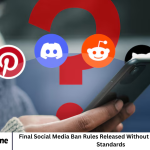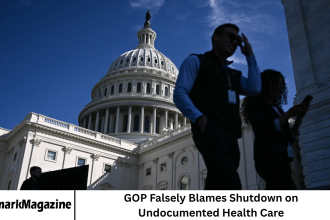Health officials in Minnesota are sounding the alarm after the number of confirmed measles cases in the state nearly doubled in recent weeks. This troubling development comes as the United States continues to grapple with multiple outbreaks of the highly contagious disease in various regions.
- The Alarming Rise in Measles Cases
- A National Trend of Concern
- Understanding the Disease: Why Measles Is So Dangerous
- The Role of Vaccination and Herd Immunity
- Communities at the Center of the Outbreak
- Misinformation and the Challenge of Rebuilding Trust
- Economic and Social Impact of Measles Outbreaks
- Government and Health Agencies Respond
- Lessons from Previous Outbreaks
- The Global Picture: Measles Beyond U.S. Borders
- What Parents and Communities Can Do
- Looking Ahead: Preventing Future Outbreaks
- Frequently Asked Question
- Conclusion
Public health experts warn that a combination of vaccine hesitancy, misinformation, and global travel may be fueling the resurgence of a virus once thought to be eliminated from the U.S. The Minnesota Department of Health (MDH) has reported a sharp increase in confirmed cases, marking the largest surge the state has seen in years.
The current outbreak, while still being contained, is spreading quickly among unvaccinated individuals and communities with low immunization coverage. As a result, public health authorities are once again dealing with a disease that was supposed to be relegated to history books.
More Read: Newsom Warns Trump Policies Could Double California Health Costs
The Alarming Rise in Measles Cases
In early 2025, Minnesota had reported fewer than a dozen measles cases. However, by mid-October, that number has almost doubled, reflecting a disturbing trend mirrored across several U.S. states. According to health officials, most of these infections involve unvaccinated children under the age of 10.
Clusters have emerged primarily in communities with lower vaccination rates, where misinformation about vaccine safety continues to circulate. Dr. Ruth Lynfield, State Epidemiologist at MDH, explained that measles spreads so easily that even a small dip in vaccination coverage can lead to major outbreaks.
“One infected person can transmit measles to up to 90% of nearby individuals who are not immune,” Lynfield noted. “This makes it one of the most contagious viruses known.” Minnesota’s vaccination coverage for the measles, mumps, and rubella (MMR) vaccine has fallen slightly below the recommended 95% threshold, which is necessary to maintain herd immunity.
A National Trend of Concern
Minnesota’s situation is not isolated. Across the United States, health departments are reporting an uptick in measles cases after years of relative stability. The Centers for Disease Control and Prevention (CDC) has confirmed multiple outbreaks in states including Ohio, New York, and Texas.
This resurgence follows a broader global trend. According to the World Health Organization (WHO), measles cases worldwide have surged by over 30% in the past year, largely due to pandemic-related disruptions in routine immunizations. When COVID-19 forced many clinics to close or reduce services.
Millions of children missed critical vaccinations. Now, the effects of that interruption are becoming painfully evident. Dr. Rochelle Walensky, former CDC director, emphasized that “measles anywhere is a threat everywhere.” With international travel resuming to pre-pandemic levels, the risk of importing the virus from countries experiencing large outbreaks has significantly increased.
Understanding the Disease: Why Measles Is So Dangerous
Measles is not a mild childhood illness—it’s a serious and sometimes deadly disease. Caused by the measles virus, it spreads through respiratory droplets when an infected person coughs or sneezes. The virus can remain airborne for up to two hours, meaning that even brief exposure in a shared space can lead to infection.
Symptoms typically begin with high fever, cough, runny nose, and red, watery eyes. Within a few days, a distinctive red rash appears, spreading from the face to the rest of the body. Complications can include pneumonia, brain inflammation (encephalitis), and death, particularly in young children and immunocompromised individuals.
The CDC estimates that one in every 20 children with measles develops pneumonia, and one in 1,000 may develop encephalitis. For every 1,000 children infected, one or two may die. These risks are entirely preventable with vaccination, which provides lifelong protection in most cases.
The Role of Vaccination and Herd Immunity
The MMR vaccine remains the most effective tool in preventing measles outbreaks. Two doses of the vaccine are about 97% effective at preventing infection. The first dose is typically given between 12 and 15 months of age, with a second dose administered at 4 to 6 years.
Herd immunity—when a large percentage of the population is vaccinated—protects those who cannot receive vaccines, such as infants or individuals with medical conditions that weaken their immune systems. When vaccination rates drop below 95%, this collective protection falters, allowing outbreaks to occur even among populations that were previously safe.
Minnesota public health officials have urged parents to review their children’s vaccination records and catch up on any missed doses. Dr. Lynfield stated, “It’s never too late to get vaccinated. Every dose counts toward protecting not just your family, but your community.”
Communities at the Center of the Outbreak
While measles affects people across demographics, outbreaks in Minnesota and other states have disproportionately impacted specific communities with historically lower vaccination rates. In some areas, religious or philosophical beliefs have led parents to opt out of vaccinations. In others, misinformation spread online has caused unnecessary fear about vaccine safety.
Community leaders and local health advocates have been working to combat myths surrounding the MMR vaccine. Faith-based organizations, local clinics, and schools are now partnering with health departments to provide educational outreach and free vaccination clinics.
One Minneapolis mother, Fatima Ahmed, shared her story after her 3-year-old son was hospitalized with measles. “I was hesitant about vaccines because of things I read online,” she said. “But seeing my child so sick was terrifying. I’ve since made sure all my kids are vaccinated.”
Misinformation and the Challenge of Rebuilding Trust
The rise of vaccine misinformation on social media has contributed significantly to declining vaccination rates. False claims linking the MMR vaccine to autism, although thoroughly debunked by scientific research, continue to circulate online. Health experts emphasize that transparency and consistent communication are key to rebuilding public trust.
The CDC and local health departments are intensifying outreach efforts, providing clear and accessible information about vaccine safety and the risks of preventable diseases. Dr. Jennifer Heath, a pediatric infectious disease specialist at the Mayo Clinic, remarked, “We’re not just fighting a virus—we’re fighting misinformation.
Combating fear with facts is our best weapon right now.”
Economic and Social Impact of Measles Outbreaks
Beyond the human toll, measles outbreaks also carry significant economic consequences. Containing a single case can cost thousands of dollars in public health resources, including contact tracing, quarantines, and vaccination drives. When outbreaks occur in schools or workplaces, they can cause widespread disruptions.
According to a CDC analysis, local health departments may spend anywhere from $150,000 to $500,000 to contain a single measles outbreak. These costs strain already stretched public health budgets and divert resources from other critical programs.
Parents may also face financial hardships when children are quarantined or hospitalized, missing work and school for extended periods. “Every preventable outbreak is a burden on families, schools, and communities,” said Dr. Heath. “It’s far more cost-effective to prevent these diseases through vaccination.”
Government and Health Agencies Respond
In response to the growing number of cases, Minnesota health officials have launched a coordinated campaign to raise awareness and expand vaccination access. Pop-up clinics, mobile vaccination units, and community health fairs are being organized across the state to reach underserved populations.
The CDC has also issued an advisory to healthcare providers nationwide, urging them to remain vigilant for potential cases. Physicians are being reminded to quickly isolate suspected measles patients and report confirmed cases to public health authorities.
Federal and state officials are also working with schools to review student immunization records, ensuring compliance with vaccination requirements. Unvaccinated students may be temporarily excluded from school during outbreaks to prevent further transmission.
Lessons from Previous Outbreaks
Minnesota has faced measles outbreaks before—most notably in 2017, when a similar surge affected Somali-American communities in the Twin Cities. That outbreak, which infected 79 people, was linked to misinformation campaigns that discouraged vaccination.
Health officials hope that lessons learned then will help contain the current situation more quickly. The 2017 experience highlighted the importance of culturally sensitive outreach and community engagement.
Since then, Minnesota has expanded its partnerships with community organizations and translated vaccine information into multiple languages to ensure inclusivity.
The Global Picture: Measles Beyond U.S. Borders
The measles resurgence in the United States is part of a larger global health crisis. Countries across Europe, Asia, and Africa are seeing record-high infection rates. The World Health Organization recently warned that over 60 countries reported significant measles outbreaks in 2024–2025, with millions of children still unvaccinated due to disruptions caused by the pandemic.
Public health experts stress that global cooperation is essential. “Viruses do not recognize borders,” said Dr. Tedros Adhanom Ghebreyesus, Director-General of the WHO. “We must strengthen immunization systems worldwide to protect everyone, everywhere.”
What Parents and Communities Can Do
Parents and caregivers play a vital role in preventing the spread of measles. Health authorities recommend the following steps:
- Check vaccination records: Ensure all family members are up to date with their MMR shots.
- Consult healthcare providers: Discuss any concerns about vaccine safety with trusted medical professionals.
- Stay informed: Rely on credible sources like the CDC, WHO, and local health departments for accurate information.
- Isolate and report symptoms: If measles is suspected, avoid public places and contact your doctor immediately.
- Support vaccination drives: Encourage friends, family, and community members to get vaccinated.
Looking Ahead: Preventing Future Outbreaks
Health officials are cautiously optimistic that with aggressive vaccination efforts and public cooperation, the current surge can be contained. However, they warn that sustained effort is needed to prevent future outbreaks. The CDC continues to advocate for routine immunization and enhanced surveillance to quickly identify and contain new cases.
Minnesota’s public health agencies are also reviewing data to pinpoint areas with the lowest vaccination rates and address barriers to access. “The goal is not just to stop this outbreak,” said Dr. Lynfield. “It’s to prevent the next one from happening.”
Frequently Asked Question
Why are measles cases rising in Minnesota and across the U.S.?
Measles cases are increasing due to declining vaccination rates, vaccine misinformation, and the resumption of global travel, which has reintroduced the virus into communities with lower immunity levels.
How contagious is measles compared to other diseases?
Measles is one of the most contagious diseases known. Up to 90% of unvaccinated individuals exposed to the virus will become infected. The virus can linger in the air for up to two hours after an infected person leaves an area.
What are the symptoms of measles?
Common symptoms include high fever, cough, runny nose, red eyes, and a red rash that spreads from the face to the rest of the body. Complications can include pneumonia, ear infections, and brain swelling (encephalitis).
How effective is the MMR vaccine?
Two doses of the MMR vaccine are approximately 97% effective in preventing measles. The vaccine also provides protection against mumps and rubella.
Can adults get vaccinated for measles?
Yes. Adults who are unsure of their vaccination status or who have not received two doses of the MMR vaccine should consult their healthcare provider. In most cases, it is safe and recommended to get vaccinated.
What should someone do if they suspect they or their child has measles?
They should immediately call a healthcare provider before visiting any clinic or hospital to avoid spreading the virus. Isolate the patient at home and follow medical guidance carefully.
How can communities prevent future outbreaks?
Maintaining high vaccination rates, countering misinformation with accurate information, and ensuring easy access to vaccines are the most effective strategies to prevent future outbreaks.
Conclusion
Minnesota’s doubling of measles cases is a stark reminder of how quickly once-controlled diseases can resurface when vaccination rates decline. The ongoing outbreaks across the U.S. underscore the urgent need for public awareness, education, and community cooperation.
Health experts agree: measles is entirely preventable, but only if communities work together to maintain high levels of immunity. The lessons from Minnesota—and from past outbreaks—are clear: misinformation can spread as fast as the virus itself, but science, vigilance, and compassion remain our best defenses.









